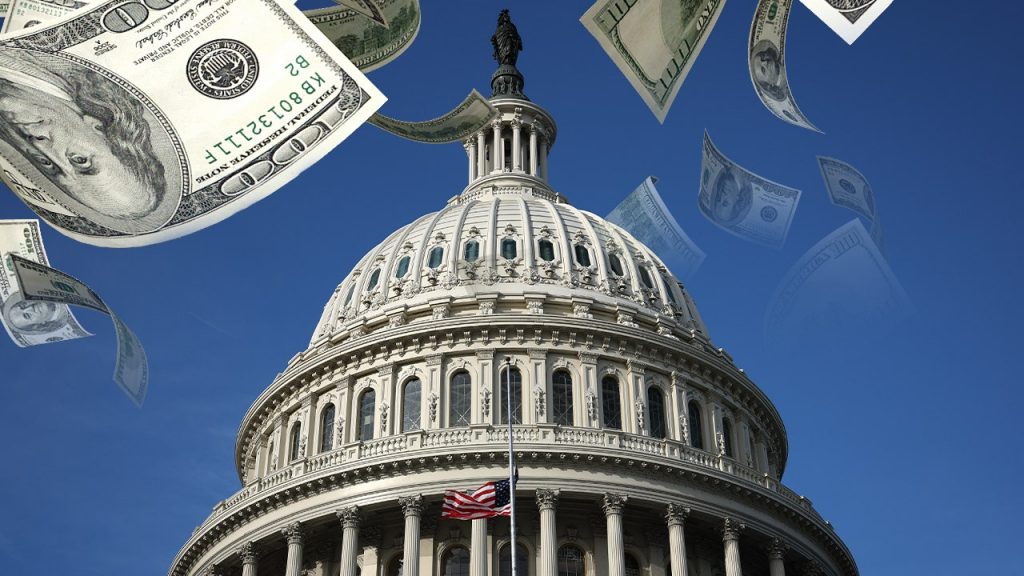The Growing Federal Bureaucracy: Bigger, Richer, and More Secretive
A recent investigative report from Open The Books, a government watchdog organization, has revealed concerning trends about the federal workforce that raise serious questions about government efficiency and transparency. As lawmakers scramble to reach agreements on government funding, this nonpartisan analysis shows that Washington’s bureaucracy has expanded significantly since 2020—becoming larger, wealthier, and increasingly opaque despite its growing cost to American taxpayers.
According to the report, the federal government currently employs approximately 2.9 million civil service workers with a combined payroll of $270 billion, plus an additional 30% in benefits. While the total number of federal employees has increased by a modest 5% since 2020, the payroll has grown nearly five times as much during the same period. This expanding workforce now costs American taxpayers a staggering $673,000 per minute, $40.4 million per hour, and just under $1 billion per day. Perhaps most striking is the growing concentration of wealth within the federal workforce: nearly 1,000 federal employees now earn more than the President’s $400,000 annual salary, over 31,000 non-Defense Department workers make more than any state governor, and nearly 800,000 federal employees earn six-figure salaries. The report also highlights an 84% increase since 2020 in employees earning $300,000 or more, and an 82% increase in those making $200,000 or more.
Transparency concerns compound these financial revelations. Open The Books discovered that the names of 383,000 federal workers across 56 different agencies have been redacted from public records, obscuring a total of $38.3 billion in taxpayer-funded compensation. John Hart, CEO of Open The Books, emphasized that “You can’t have accountability without visibility,” noting that while federal employees don’t contribute as much to the national debt as major programs like defense and safety nets, they serve as a crucial indicator of government growth. The organization argues that taxpayers deserve a clearer picture of the federal workforce and its costs, particularly as questions about government efficiency continue to mount.
Senator Joni Ernst (R-Iowa) has partnered with Open The Books to address these transparency issues, highlighting specific examples of waste and abuse. In a September letter to the Office of Personnel Management, Ernst detailed instances of federal employees double-dipping by working multiple government jobs simultaneously—often billing for more hours than physically possible in a day. One particularly egregious case involved a Department of Housing and Urban Development employee who simultaneously held contractor positions with AmeriCorps and the National Institutes of Health, sometimes billing taxpayers for more than 24 hours of work in a single day. Taking advantage of telework policies across all three positions, this employee fraudulently collected $225,866 for hours never worked. Ernst cited additional examples, including a Peace Corps human resources official caught falsifying time cards submitted to different agencies, resulting in tens of thousands of dollars in improper payments from taxpayers.
The recent government shutdown has further highlighted these fiscal concerns. According to Ernst, taxpayers will ultimately bear the cost of more than $12 billion in back pay for approximately 750,000 “non-essential” federal employees who were furloughed for nearly a month and a half. In response, Ernst introduced the Non-Essential Workers Transparency Act in October, which would require executive agencies to provide detailed reports to Congress within 30 days of any funding lapse. These reports would need to include comprehensive information about the total number of employees and contractors, their salaries, the number furloughed during the shutdown, their annual pay, and the number of employees who remained working—with all this information posted publicly on agency websites.
The findings from Open The Books and Senator Ernst’s initiatives underscore a fundamental question facing American taxpayers and policymakers alike: Why, with such a large and well-compensated federal workforce, does Washington still struggle to fund and execute the basic functions of government efficiently? As the Trump administration signals its intention to reform the administrative state, these transparency efforts may provide crucial insights into where and how taxpayer dollars are being spent within the federal bureaucracy. The growing disparity between the size of the workforce and its rapidly expanding payroll, combined with troubling examples of abuse and the significant costs of government shutdowns, suggests that greater oversight and accountability measures may be necessary to ensure that federal resources are being used effectively to serve the American public.


